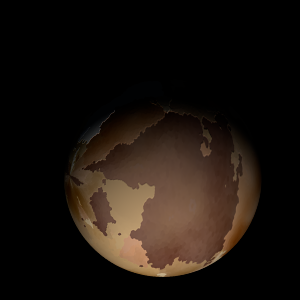|
|
Space Astro
|
Info for exoplanet "Yuzhyou Fany"
| Scientific (actual) data |
|---|
| Name | HD 110833 b |
| Planet status | Confirmed |
| Mass sini | 19.97 |
| Orbital period | 273.44 |
| Semi major axis | 0.7904 |
| Orbit eccentricity | 0.765 |
| Discovered | 1997 |
| Updated | 2024-06-25 |
| Omega | -1.8 |
| K | 1057.6 |
| Publication | Announced on a professional conference |
| Detection type | Radial Velocity |
| Mass measurement type | Radial Velocity |
| Alternate names | GJ 483 b |
| Star name | HD 110833 |
| Right ascension | 191.06° |
| Declination | 51.76° |
| Mag v | 7.027 |
| Mag j | 5.318 |
| Mag h | 4.9 |
| Mag k | 4.78 |
| Star distance | 14.994 |
| Star metallicity | 0.14 |
| Star mass | 0.812 |
| Star radius | 0.832 |
| Star sp type | K0V |
| Star temperature | 4960.66 |
| Star alternate names | GJ 483 |
| Wikipedia article | HD 110833 b |
Back
| |
| Fictional info (?) |
|---|
| Suggested name | Yuzhyou Fany |
| Planet type | Cold planet |
| It has the longest rotation period (445 days) of any planet in its solar system and rotates in the opposite direction to most other planets.
The planet telescopically displays the complete range of phases, similar to Venus and the Moon, as it moves in its inner orbit relative to HD 110833, which reoccurs over the so-called synodic period approximately every 81 days.
The ozone has probably photodissociated, and the free helium has been swept into interplanetary space by the solar wind because of the lack of a nitrogen layer. |
| Atmosphere | Helium | 60% |
| Carbon dioxide | 32% |
| Ozone | 4% |
| Nitrogen | 3.3% |
| Hydrogen deuteride (HD) | 0.47% |
| Atmospheric pressure | 0.028 bar |
 |
| No known satellites |
| Google search for Yuzhyou fany |
|
Website by Joachim Michaelis
|
|
|
|